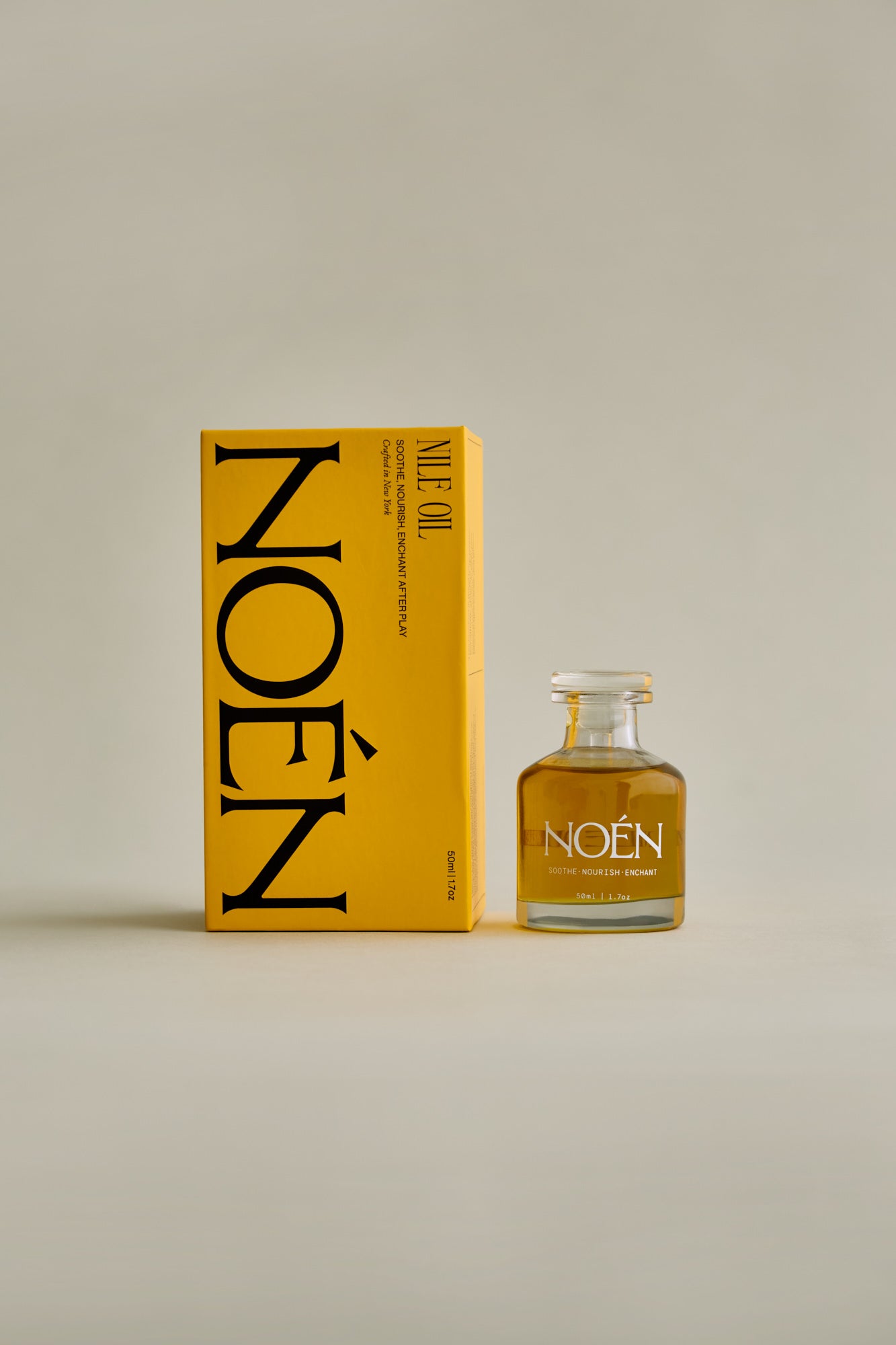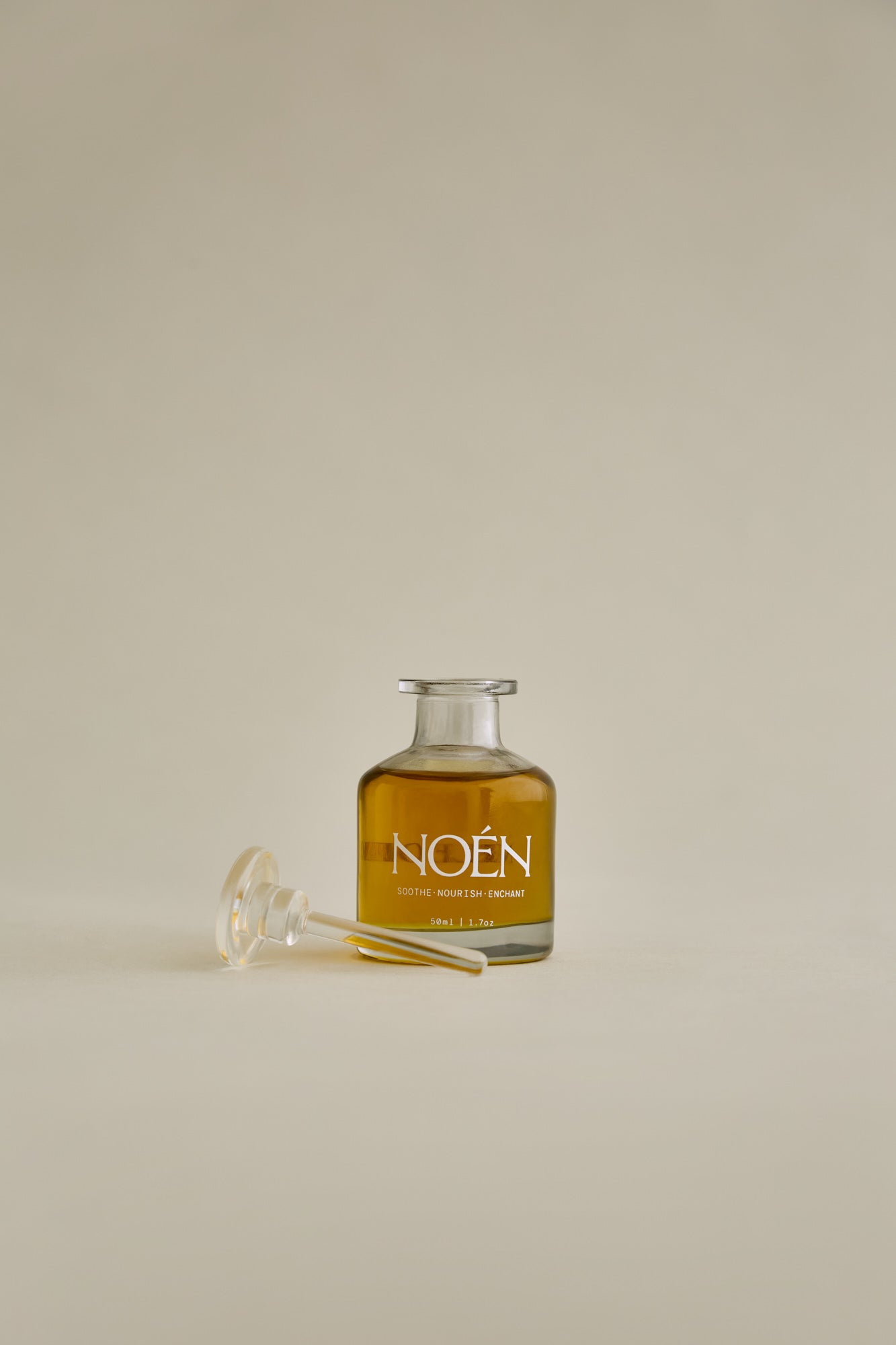Dawn on the Nile smells like wet earth and lotus.
The air is thick with it—the scent of silt meeting water, of petals opening to light. For thousands of years, this was the first breath of the day. The river at its calmest. The world at its most alive.
Ancient Egyptians didn't see the Nile as geography. They saw it as the source of everything—abundance, beauty, connection, life itself.
This is why we named our oil after it.
The River as Abundance
In Egyptian cosmology, creation emerged from Nun—the primordial waters of infinite potential. The Nile was understood as connected to these cosmic waters, a manifestation of divine generosity flowing endlessly without depletion. The river gave constantly: water, fertile soil, fish, papyrus, lotus. It sustained millions without effort, without asking for anything in return.
The Egyptians called their land kemet—"the black land"—named for the rich, dark silt the Nile left behind each year. This wasn't just soil. It was nourishment made visible.
They understood something we've forgotten: abundance isn't accumulation. It's flow. The river nourished everything it touched—not through force, but through presence.
The River as Attraction
The Nile was magnetic. Everything gathered at its banks—people, animals, plants, entire civilizations. It didn't demand attention. It simply provided, and life came to it naturally.
The river's annual flood was associated with Osiris, god of regeneration, whose mythology mirrored the Nile's rhythm—death, dissolution, return. Osiris was inseparable from Isis, goddess of magic and devotion. Together, they represented the cycle that sustained Egypt: masculine flow and feminine magnetism, eternally renewing.
Cleopatra understood this. She didn't perform allure. She embodied it. Her power came from the same source as the river's—quiet, constant presence. She knew that attraction isn't about chasing. It's about creating an atmosphere so rich that others are drawn to it instinctively.
Her chambers were extensions of the Nile's logic: low light, air thick with Blue Lotus and myrrh, oils that softened the skin and opened the senses. She created environments of pleasure—not loud or excessive, but deeply felt. Subtle. Lingering.
The River as Ritual
The Nile wasn't only spiritual. It was sensory, tactile, intimate.
Egyptians bathed in its waters. They anointed their skin with oils pressed from plants that grew along its banks—Blue Lotus, moringa, castor. The Blue Lotus was sacred. It bloomed in the morning light and closed in the afternoon. Its scent was prized for inducing calm and heightened awareness—a flower that understood pleasure and presence were inseparable.
To care for the body was to honor the river. Beauty wasn't vanity. It was reverence.
The River as Beauty
To the Egyptians, beauty wasn't superficial. It was ma'at—divine order made visible. A beautiful body was a body in harmony with nature, cared for with the same attention they gave to temples and offerings. They adorned themselves not out of vanity, but reverence. Kohl-lined eyes to honor the gods. Oils pressed from the Nile's lotus and moringa to soften skin and preserve youth. Beauty was a spiritual practice, inseparable from health, pleasure, and connection to the divine. The Nile made this possible. It grew the plants. It provided the water for bathing rituals. It created the conditions for a culture that understood: caring for your body is caring for your spirit. This is the beauty we're returning to—not Instagram filters or anti-aging panic, but the ancient understanding that your body, when nourished, becomes its own kind of temple.
The River as Connection
When the Greek historian Herodotus visited Egypt in 450 BCE, he was struck by a singular truth. He wrote: "Egypt is the gift of the Nile." He meant it literally—without the river, the land would be desert. But the phrase holds a deeper truth.
The Nile connected everything. Cities, trade routes, people, gods. It was the center around which life organized itself. Not through dominance, but through nourishment.
This is the intelligence we've lost. We've been taught that connection requires effort—that intimacy is something we have to work for. But the body knows better. Connection, like the river, is natural when the conditions are right. When there is presence. When there is care.
The Modern Nile
When we first created this oil, we called it "for Afterplay." It was designed for a single moment—the quiet after touch.
But the more we lived with it, the more we realized: it was never about one moment. It was about the entire flow. After movement. After sun. After waking. After bathing. After intimacy of any kind—with another, with yourself, with the day.
Our name should capture that endlessness. That abundance. That magnetic pull.
So we returned to our source: The Nile, as we originally named it. Because the Nile was never just one thing. It was abundance (it gave constantly). It was attraction (life came to it naturally). It was ritual (bathing, anointing, honoring the body). It was connection (the center around which everything flowed). It was beauty (the force that made caring for yourself feel sacred, not indulgent).
The oil carries that same logic. Infused with Blue Lotus—the flower that grew along the Nile's banks and opened Cleopatra's senses—and botanical aphrodisiacs that work with your body's natural chemistry, it doesn't just hydrate. It transforms how you experience your own skin.
It softens. It lingers. It becomes a subtle signature—not loud, but magnetic. Like the river itself.
On Flow
The Nile didn't give once and stop. It flowed constantly, endlessly. That's what true nourishment is. Not a single gesture, but a rhythm.
This oil is that rhythm. A way to honor your body the way the Egyptians honored the river: as the source of pleasure, connection, and presence itself.








